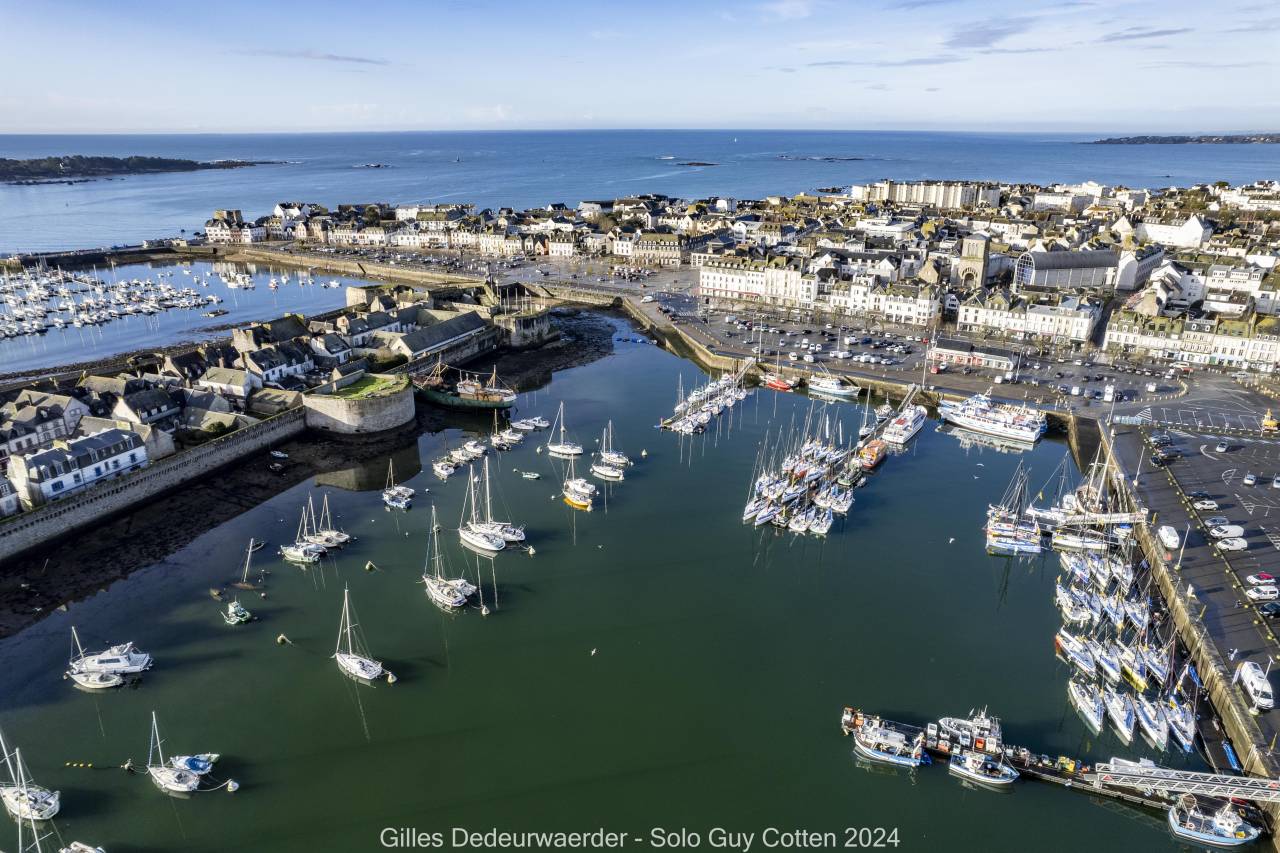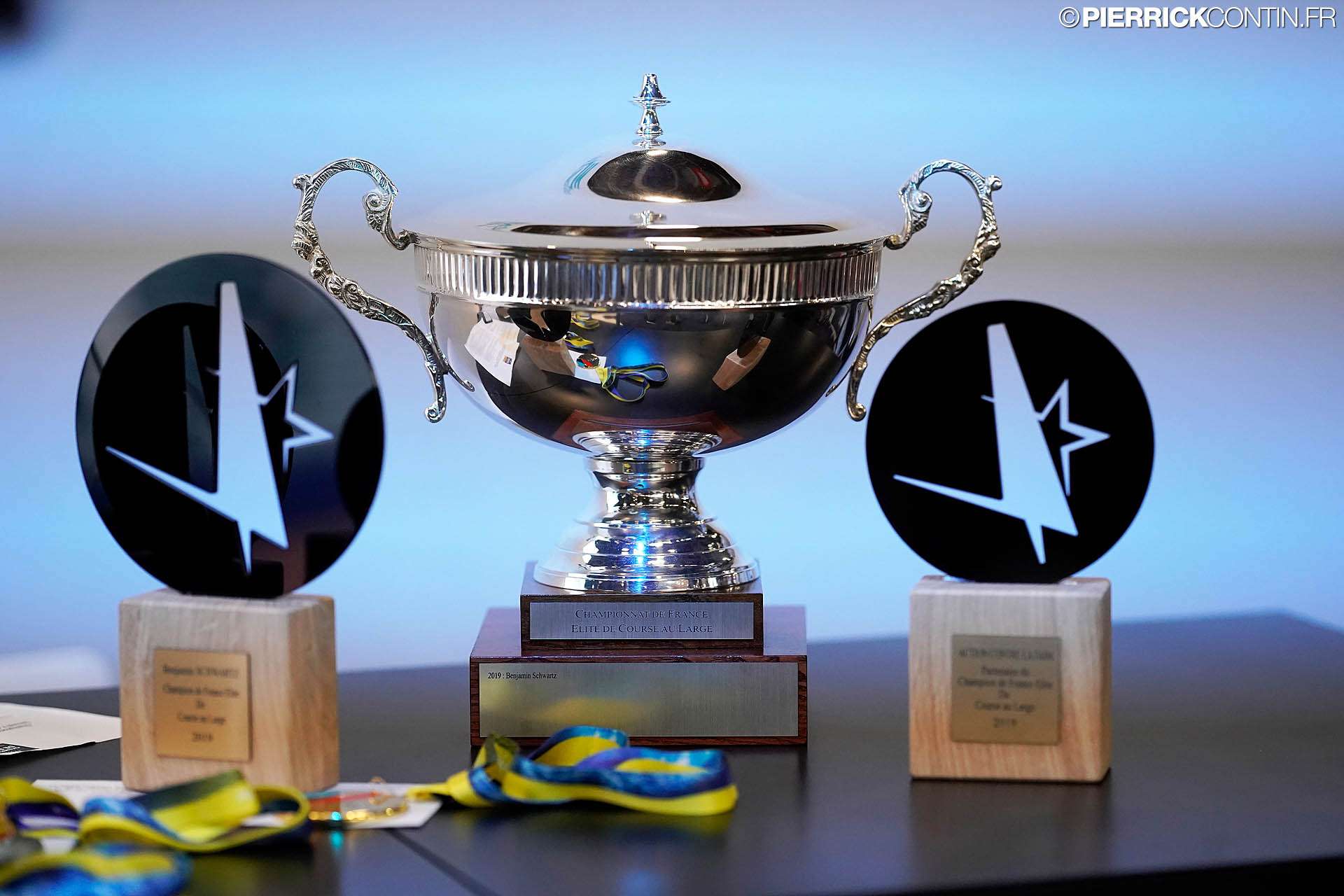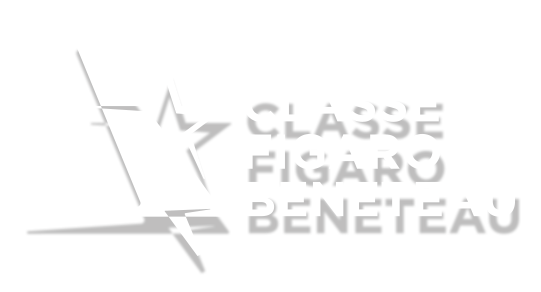The Solo Guy Cotten Concarneau: A Chapter of Figaro Beneteau Class History
Tuesday, march 12, 2024
At the foot of the walled city of Concarneau, 35 skippers, including 15 rookies, have been competing since Monday in the first race of the Figaro circuit season: the Solo Guy Cotten. This sporting event, which has marked the opening of the French Elite Offshore Racing Championship since 2017, celebrates its 48th edition this year! An exceptional longevity in offshore racing, which highlights the richness of this regatta, emblematic of the Figaro Class in more ways than one.

There have been arrivals in the early hours, skippers with tired faces, epic battles right up to the channel, moments of great fear and immense joy playing out in this wonderful playground that is the Finistère coast, with its countless currents and rocks... For all sailors who have passed through the "Figaro" stage, the "Solo Guy Cotten" is a must in the season, one of those races that is marked in the calendar every year almost reflexively. But how did this race become a staple of the Figaro calendar to the point of being constitutive?
It all began in 1976, under the lovely name of the "110 miles of Concarneau." The Concarneau Sailing Society (SRC), initiated by Patrick Morvan and driven in part by the dynamism of some young wolves eager for competition, launched this new regatta, immediately conceived as "family-friendly and easy to access," emphasizes Marie-Astrid Parendeau, now the event's press officer.
Half-tonners and conviviality
The race was then open to cruisers of all kinds, with a strong emphasis on half-tonners, boats built like prototypes from 1967 onwards, whose motto has entered the legend of sailing: "Half a ton, twice the fun"!
From the very first editions, "the big names of French offshore racing, such as Michel Desjoyaux or Jean Le Cam," were already found on the starting line, recounts Pierre Gautier, the current director of the Solo Guy Cotten. The race, relatively short but always fiercely contested, became a key step in the preparation of sailors who then tackled the Course de l'Aurore, renamed the Solitaire du Figaro in 1980.
Edition after edition, an entire atmosphere was built, with a wealth of exploits that fed its legend. In this small Breton fishing port, there is a love for the "simple and accessible" aspect, recalls Marie-Astrid. The pontoon where the competitors moor is opposite the restaurant where they come to share a final "little black" before the start, and above all to celebrate the arrivals and replay the race until late into the night... "Conviviality is part of Concarneau, and has naturally become a key ingredient of this regatta."
Over the years, the Figaro Class has grown, with the arrival of the half-tonner Figaro Beneteau designed by Finot in 1990. With it came the concept of monotype, as well as professionalism. But this new audience quickly adapted to the customs of Concarneau, and "even though the sporting level has increased year by year, the DNA of this race has remained unchanged, with the desire to remain inexpensive and open to all," explains Pierre Gautier.
A specific course
But ever more popular, the Figaro Class, whose Figaro Beneteau 2 was launched in 2003 thanks to the stroke of architect Marc Lombard's pen, has increasingly significant needs for its competitors. In 2009, a step was taken by offering for the first time "a course specifically for Figarists, different from the 110 miles," recalls Pierre Gautier.
The "Solo Concarneau" is born, in a slightly extended format to allow sailors to spend two nights at sea. "With always the idea that they arrive during the day, it's one of the principles of this race, and that's why the course is always delivered at the last moment, depending on the weather," he points out.

